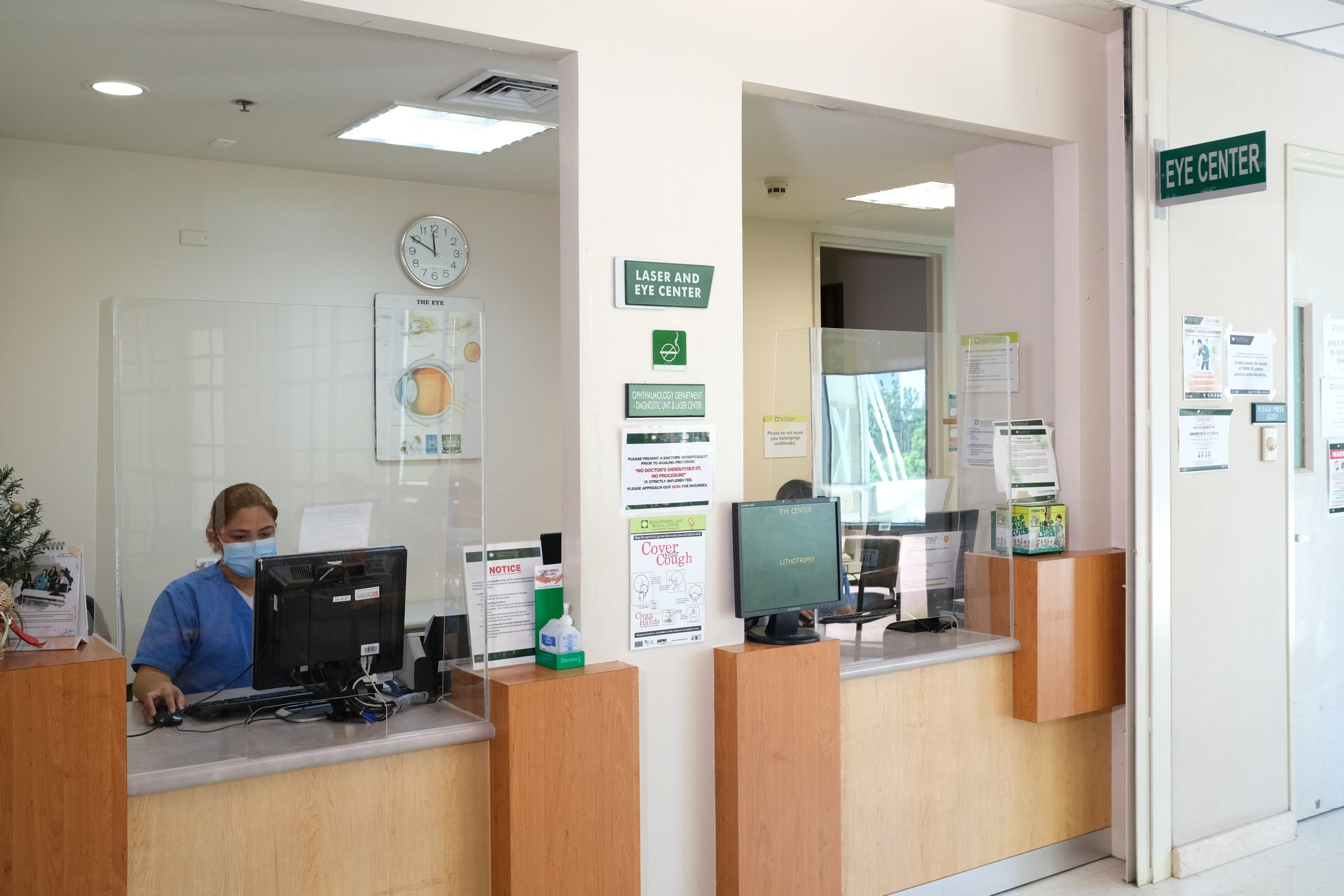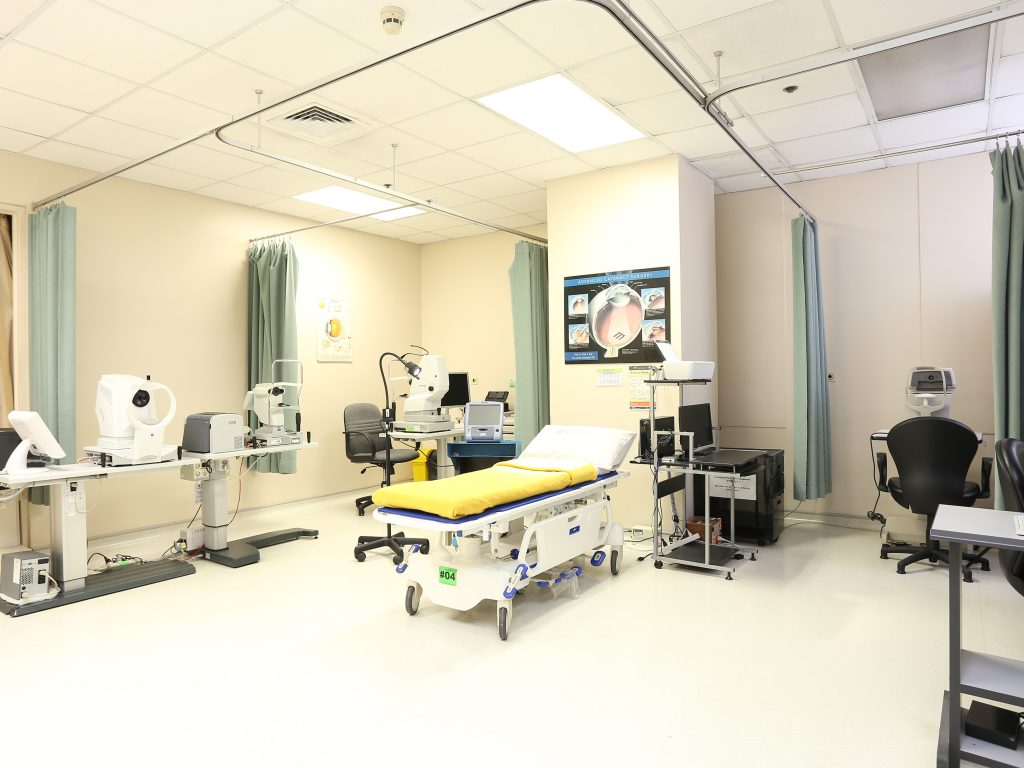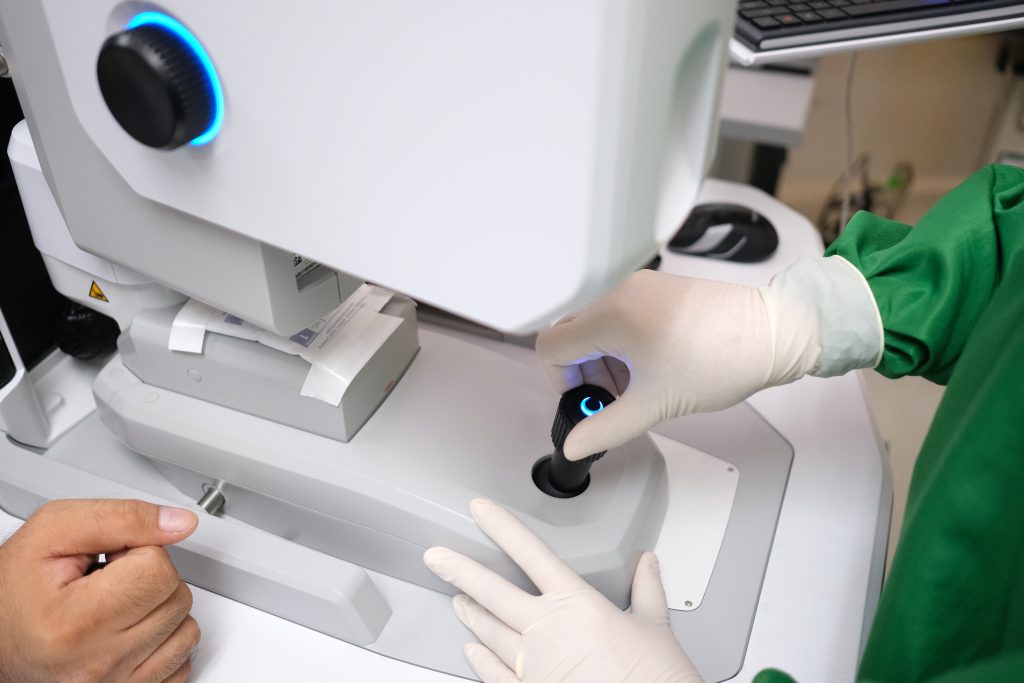We at the Asian Hospital and Medical Center remain at the forefront of eye care in the country through our world-class facilities and innovative approach to ophthalmology care. Our Eye Center harnesses cutting-edge technology to deliver a full spectrum of diagnostic tests and laser treatments, each one carefully tailored to address the patient’s specific eye needs.
Leading the Eye Center is a group of board-certified eye specialists who are trained and experienced to manage a range of eye conditions, including cataracts and glaucoma. The following diagnostic tests are available at our center:
- Visual field test (Perimetry) – This diagnostic test is used to assess the patient’s central and peripheral vision. It can also be used to measure the extent of visual disability in glaucoma patients.
- Optical coherence tomography – This is a non-contact imaging test used to capture high-resolution tomographic and biomicroscopic images of ocular structures, including the retina, cornea, retinal nerve fiber layer, macula and optic disc.
- Angiography (Fluorescein and Indocyanine) – With eye angiography, fluorescein or indocyanine dye is injected into the bloodstream, which allows for better visualization of the ocular structures. This enables doctors to accurately diagnose eye diseases such as macular degeneration, diabetic retinopathy, retinal vein occlusions and cystoid macular edema, as well as diagnose appropriate treatment procedures such as laser surgery.
- Biometry (Immersion and Intraocular Lens Master) – This test is used to measure the shape and size of the eye, and the power of the cornea, allowing specialists to prescribe suitable intraocular lens implants during cataract and refractive surgery.
- Central corneal tomography (Pachymetry) – This test is used to measure the thickness of the cornea using an ultrasonic transducer. It is typically done for the early detection of glaucoma.
- Specular microscopy – This non-invasive procedure assesses the corneal endothelium, specifically its cell count. It is a routine procedure for patients who will undergo cataract surgery or any eye surgery that involves creating an incision in the cornea.
- Fundus photography – This procedure uses a camera-equipped, low-power microscope called a fundus camera to capture images of the interior of the eye, including the retina, optic disc, macula and posterior pole. It is used to diagnose eye diseases such as glaucoma and retinal detachment.
- B-scan (Ultrasound) – High-frequency sound waves are used to capture images of the posterior segment of the eyeball. It is routinely done prior to cataract surgery.
- Autorefraction – This is a standard eye examination that measures refractive error, which, in turn, is used for eyeglass or contact lens prescription.
AHMC’s Eye Center is fully equipped to provide eye laser treatment, which include:
- Panretinal photocoagulation – This is a laser treatment used to cauterize abnormal blood vessels that have developed in the eye. It is a recommended treatment for diabetic retinopathy.
- Focal laser treatment – This treatment is used to seal swellings (macular edema) and small breaks or leaks in the retina.
- Yag capsulotomy – This is a special laser treatment that is used to reduce glare and improve vision after cataract surgery.
- Yag iridotomy – This laser is designed to create a microscopic hole in the iris, thereby draining intraocular fluid and relieving pressure. It is typically done to treat angle-closure glaucoma.
- Laser iridoplasty – Laser is applied to the outer side of the iris, thereby preventing it from blocking the eye’s drainage channels.
- Argon trabeculoplasty – This treatment is used to widen the eye’s drainage channels, making it easier for intraocular fluid to flow and relieving pressure.
- Laser suture lysis – This is a laser procedure to painless cut sutures following eye surgery.
- Gonioplasty – This is a technique used to help pull the peripheral iris away from the trabecular meshwork in the angle of the eye. It is done to treat angle-closure glaucoma and plateau iris syndrome.
- Transscleral cyclophotocoagulation – Laser is used to reduce the amount of aqueous humor (clear fluid in the eye) to relieve intraocular pressure.
- Transpupillary thermotherapy – Infrared radiation is used to treat intraocular tumors, including retinoblastoma and choroidal melanoma.
Call +(632) 8-771-9000 for inquiries about the Eye Center.




